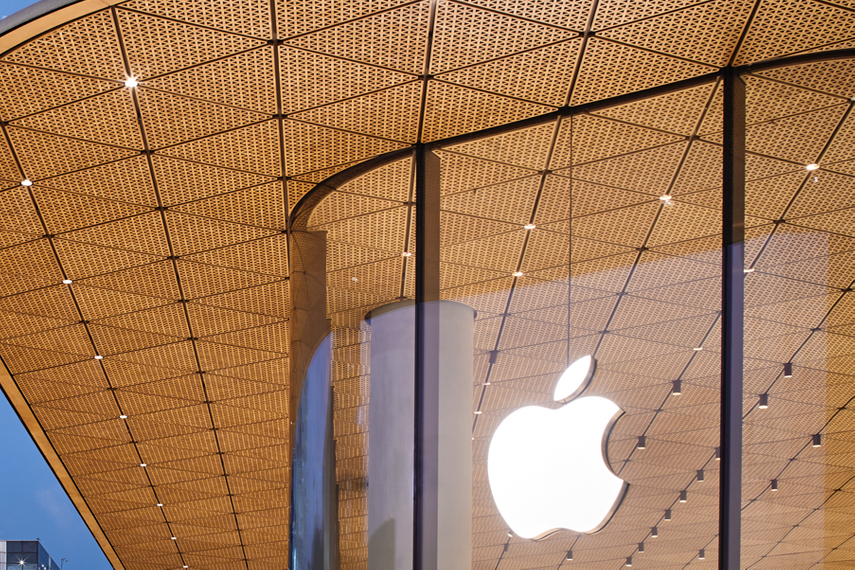
An unexpected fallout of the recent tariff war between the US and the rest of the world could lead to a deepening of ties between Apple and India—a market that has not always been a priority for the global tech giant.
China, which is Apple’s manufacturing stronghold and second largest market, is among the worst-hit nations following the new tariff regime imposed by the Trump government. The current rate is a steep 54% with the looming threat of an additional 50% tariff from the US in response to reciprocal measures taken by China. An escalating war of words between the world’s two largest economies is currently ongoing, with the Chinese government describing the threat of further increases in tariff as a “mistake on top of a mistake.”
At least in the short term, India is likely to benefit from the geopolitical squabble. Even as Apple CEO Tim Cook is expected to negotiate an exemption for Apple from the Trump administration, the company is driving a greater manufacturing push from India. Hit with a relatively modest 26% levy, India could be the source of an ever-increasing number of flagship iPhone models for Apple, according to the WSJ.
India currently supplies 10 million iPhones to the US market, a number that could increase substantially through 2025. Last year, investment firm Jefferies anticipated that through 2025, India would account for 25% of global shipments of iPhones, with over 50 million units of the smartphone being manufactured in the country. This marks a sharp increase from the less than 1% of manufacturing that India accounted for in 2017.
The move fits the Indian government’s plans to revitalise high-end manufacturing within India and to provide global companies with production linked incentives to shift their factories to the country. It also helps Apple diversify its supply chain—a long term priority for the company—besides benefitting from lower labour costs in India.
However, the urgency of the current move is clearly driven by the calamitous impact of the tariff announcements on Apple’s stock. The company’s market cap has declined by almost $640 billion over the last three days. In the meantime, consumers in the US have been rushing to make their purchases before an actual official announcement on price revisions.
Advantage: India
After almost a decade of enjoying a strictly niche popularity, Apple belatedly launched its first flagship store in India in 2023; an event presided by Cook. And over the past few years, the iPhone has grown to have a commanding presence in India’s ultra-premium smartphone segment. It accounts for 23% of the Indian smartphone market in value terms according to research from Counterpoint. Domestic shipments have been growing year on year, touching 12 million units in 2024, according to figures from IDC.
The iPhone managed to crack the top five brands list for smartphones in India for the first time in 2024. India is currently the fourth largest market for Apple, following the US, China and Japan. An increase in domestic manufacturing could better serve the Indian market and lend further impetus to the great strides Apple has made over the last few years. Tie-ups with large domestic phone operators such as Airtel have made Apple’s flagship services, such as AppleTV+ and Apple Music, more accessible to Indian audiences, even if the subscriber numbers fall short of its much larger rivals.
The company recently announced plans to open four additional stores in India—specifically in Mumbai, Delhi NCR, Bangalore and Pune.
Apple has been upping the ante on the manufacturing front with the launch of its fourth manufacturing facility late last year, owned by Tata Electronics. The plant is devoted to iPhones and is the result of Indian conglomerate Tata acquiring a majority stake in a manufacturing unit from Taiwan's Pegatron. Besides the domestic market, India is also emerging as a production hub with the country paying host to a unit that manufactures Airpods from Hyderabad.
 A Tata Electronics plant in Hosur, Tamil Nadu that makes Apple iPhone components. Photo: Reuters
A Tata Electronics plant in Hosur, Tamil Nadu that makes Apple iPhone components. Photo: Reuters The tariff war could thus further reinforce the attractiveness of the India market both as a manufacturing hub and as a new consumer market, as Apple builds in and for India to a greater extent.


+(900+x+600+px)+(3).png&h=334&w=500&q=100&v=20250320&c=1)
+(900+x+600+px).jpg&h=334&w=500&q=100&v=20250320&c=1)
.jpg&h=334&w=500&q=100&v=20250320&c=1)


.jpg&h=334&w=500&q=100&v=20250320&c=1)




+(900+x+600+px)+(2).jpg&h=268&w=401&q=100&v=20250320&c=1)
.jpg&h=268&w=401&q=100&v=20250320&c=1)
.jpg&h=268&w=401&q=100&v=20250320&c=1)
.jpg&h=268&w=401&q=100&v=20250320&c=1)

.jpg&h=268&w=401&q=100&v=20250320&c=1)

.png&h=268&w=401&q=100&v=20250320&c=1)